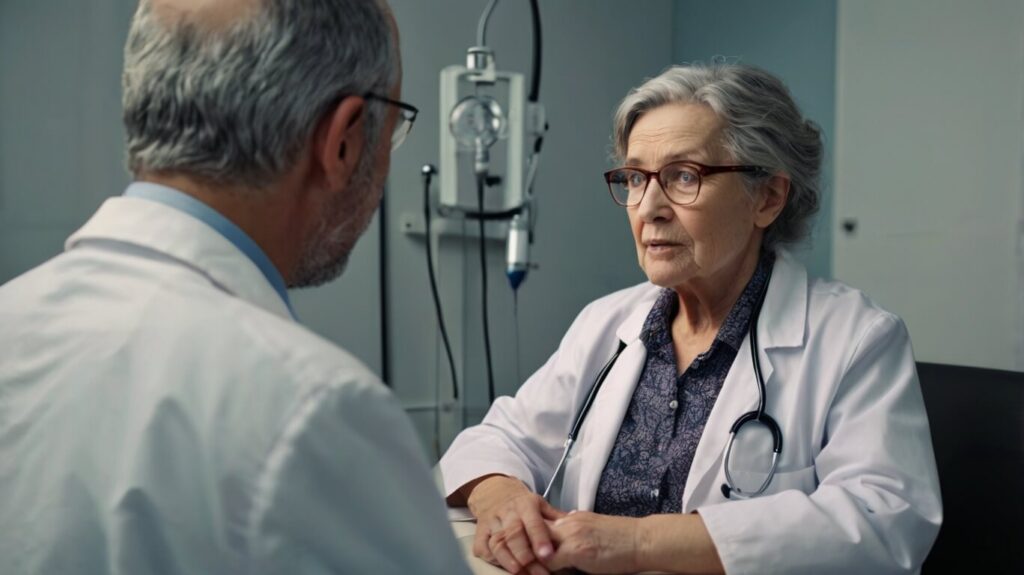What is Parkinson Disease ? and When to Seek Help
Parkinson’s disease is a complex neurological disorder that affects millions of people worldwide. Despite being widely known, many are unaware of what it truly entails, who it affects, and how it impacts the body.

This blog aims to provide a comprehensive overview of Parkinson’s disease, shedding light on its causes, symptoms, and the importance of early diagnosis and management.
What is Parkinson’s Disease?
Parkinson’s disease is a progressive neurodegenerative disorder that primarily affects movement. It is named after Dr. James Parkinson, who first described the condition in 1817.
The disease is characterized by the gradual loss of nerve cells (neurons) in a specific region of the brain known as the substantia nigra.
These neurons produce dopamine, a chemical messenger responsible for transmitting signals within the brain to coordinate smooth and controlled muscle movements.
As the dopamine-producing cells degenerate, the brain loses its ability to regulate movement, leading to the hallmark symptoms of Parkinson’s disease, including tremors, rigidity, and bradykinesia (slowness of movement).

While the exact cause of Parkinson’s disease remains unknown, a combination of genetic and environmental factors is believed to play a role in its development.
Who Does Parkinson’s Disease Affect?
Parkinson’s disease can affect anyone, but certain factors may increase the risk. It is more common in older adults, typically appearing after the age of 60.
However, around 5-10% of cases, known as early-onset Parkinson’s, occur before the age of 50.
Gender also plays a role, as men are approximately 1.5 times more likely to develop Parkinson’s disease than women.

Family history is another significant risk factor; individuals with a close relative who has Parkinson’s are at a higher risk of developing the condition themselves.
Moreover, certain genetic mutations are linked to the disease, although they account for a small percentage of cases.
Environmental exposures, such as prolonged contact with pesticides and herbicides, have also been associated with an increased risk of Parkinson’s.
However, these factors alone do not cause the disease, suggesting a complex interplay between genetics and environment.
How Does Parkinson’s Disease Affect the Body?
Parkinson’s disease affects both motor and non-motor functions, leading to a wide range of symptoms. Understanding these symptoms is crucial for recognizing the condition and seeking timely medical intervention.

1. Motor Symptoms
Tremors: One of the most recognizable signs of Parkinson’s is a tremor, or shaking, that usually begins in one hand or arm. It often occurs at rest and may diminish with intentional movement.
Bradykinesia: This refers to the slowness of movement, which can make everyday tasks like buttoning a shirt or writing difficult. Bradykinesia can also affect facial expressions, leading to a characteristic “masked face” appearance.
Rigidity: Stiffness in the limbs and trunk can cause discomfort and reduce the range of motion. This muscle stiffness, combined with bradykinesia, can make movements appear jerky or robotic.
Postural Instability: As the disease progresses, balance and coordination issues may arise, increasing the risk of falls. This symptom usually appears in the later stages of the disease.
Gait Problems: Individuals with Parkinson’s often develop a shuffling walk with short, rapid steps. They may also experience a phenomenon called “freezing,” where they feel as if their feet are glued to the ground, making it difficult to initiate movement.
2. Non-Motor Symptoms
Non-motor symptoms of Parkinson’s can be just as challenging as motor symptoms and may include:
Cognitive Impairment: Some individuals experience memory problems, slowed thinking, and difficulty in concentrating. In advanced stages, this can progress to dementia.
Mood Disorders: Depression, anxiety, and apathy are common among people with Parkinson’s. These symptoms can significantly impact quality of life and may precede motor symptoms.
Sleep Disturbances: Individuals may experience insomnia, vivid dreams, or REM sleep behavior disorder, where they act out their dreams.
Autonomic Dysfunction: Parkinson’s can affect the autonomic nervous system, leading to symptoms such as constipation, urinary problems, sexual dysfunction, and blood pressure fluctuations.
Sensory Changes: Some people with Parkinson’s report a diminished sense of smell, pain, or a tingling sensation in their limbs.
When to See a Doctor
Early diagnosis and treatment are crucial in managing Parkinson’s disease effectively. If you or a loved one notice any of the following symptoms, it is essential to consult a healthcare professional:

1. Persistent Tremors
While not all tremors indicate Parkinson’s, a persistent, resting tremor, especially if it starts on one side of the body, warrants a medical evaluation.
2. Difficulty with Movement
If you notice a decrease in your ability to move, stiffness in your limbs, or slowness in performing daily tasks, it may be time to see a doctor. These symptoms can be subtle at first but tend to worsen over time.
3. Balance and Coordination Issues
Frequent falls, a stooped posture, or a feeling of unsteadiness can be signs of Parkinson’s disease, particularly if they are accompanied by other motor symptoms.
4. Changes in Handwriting
Micrographia, or the tendency for handwriting to become smaller and more cramped, is a common early symptom of Parkinson’s disease. If you notice a significant change in your handwriting, it’s worth discussing with a doctor.
5. Mood and Cognitive Changes
Depression, anxiety, memory problems, or difficulty in thinking clearly can be early signs of Parkinson’s disease or other neurological conditions. These symptoms should not be ignored, especially if they occur alongside motor changes.
The Importance of Early Diagnosis
There is currently no cure for Parkinson’s disease, but early diagnosis and treatment can significantly improve quality of life. Medications, such as levodopa and dopamine agonists, can help manage symptoms.
Physical therapy, occupational therapy, and speech therapy are also beneficial in maintaining mobility, daily functioning, and communication skills.
In some cases, surgical interventions like deep brain stimulation (DBS) may be considered, particularly for individuals who do not respond well to medication.
DBS involves implanting electrodes in specific areas of the brain to regulate abnormal impulses.
Parkinson’s disease is a complex and multifaceted condition that can significantly impact the lives of those affected.
Understanding its symptoms and seeking early medical intervention are critical steps in managing the disease and maintaining a good quality of life.
If you or someone you know is experiencing symptoms of Parkinson’s, do not hesitate to consult a healthcare professional. With the right treatment and support, it is possible to live well with Parkinson’s disease

